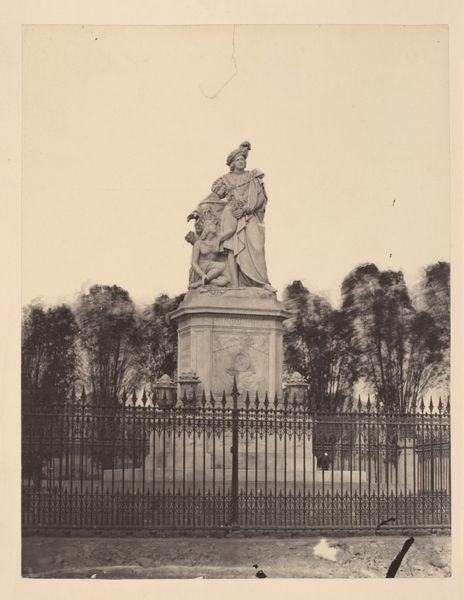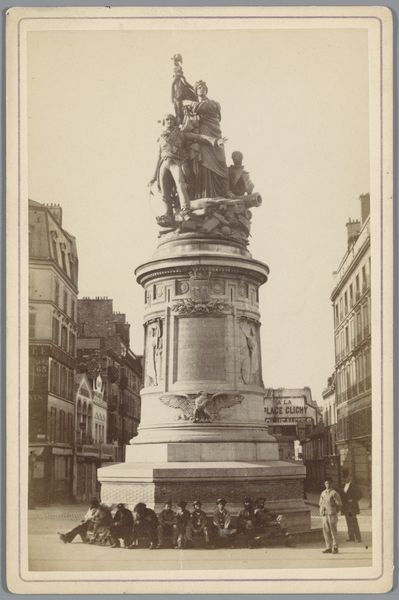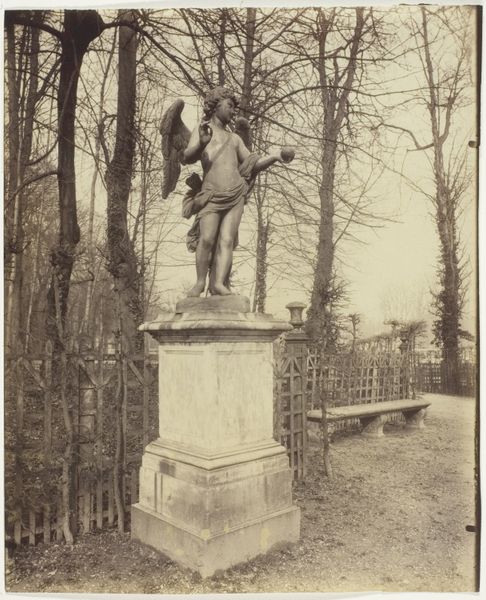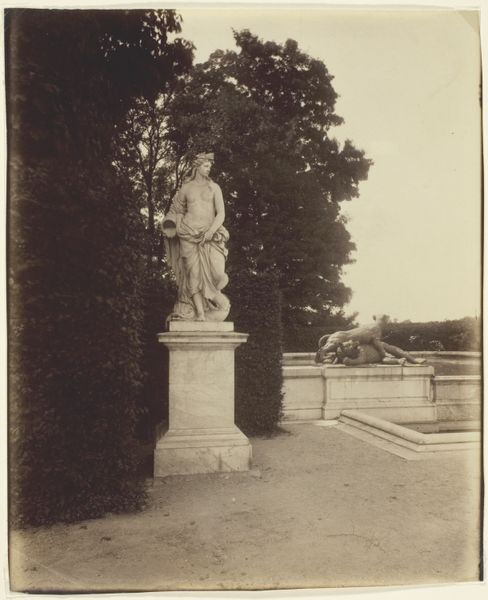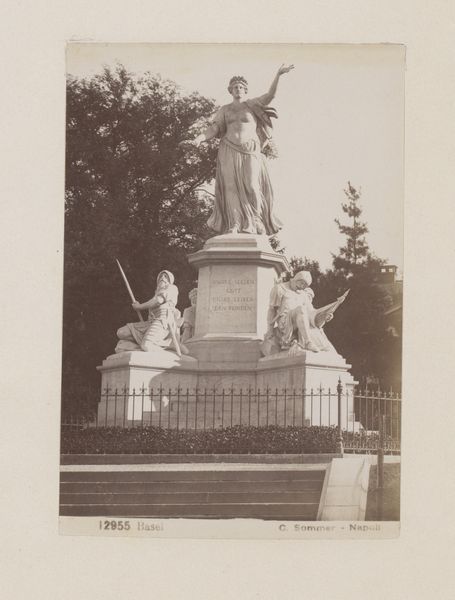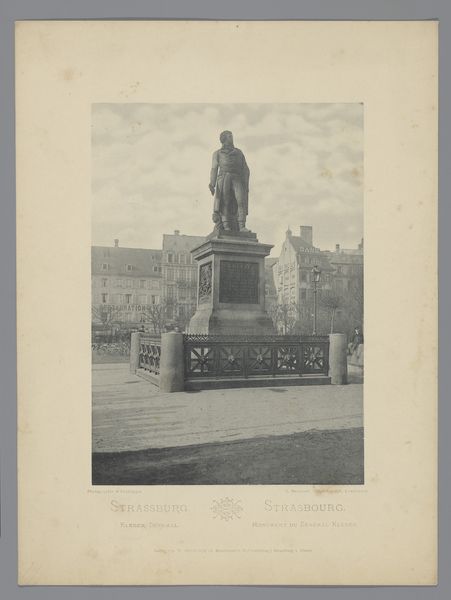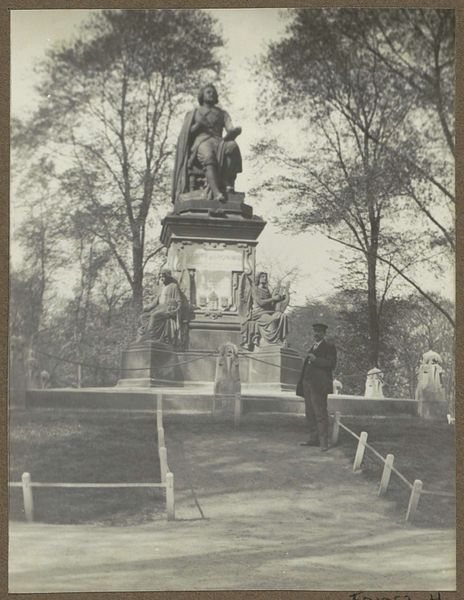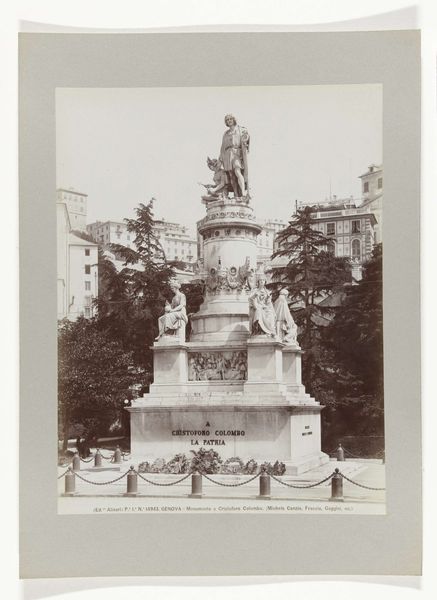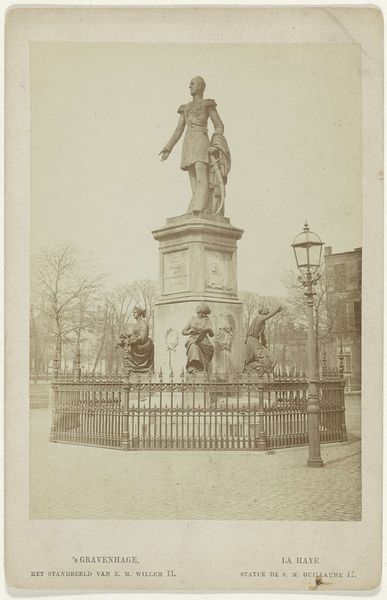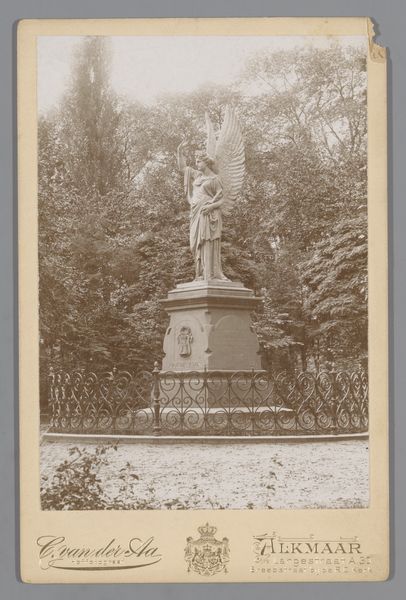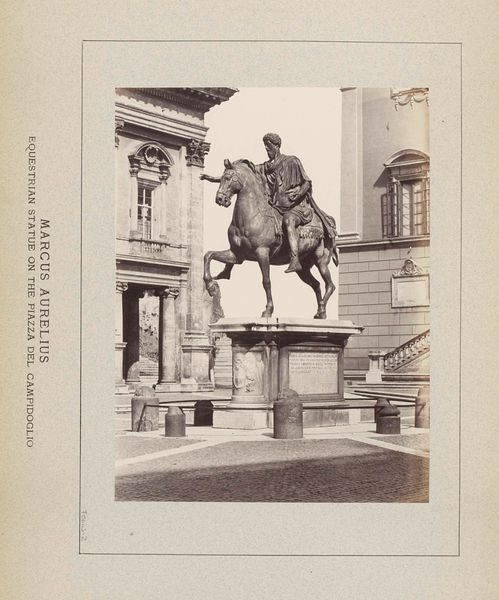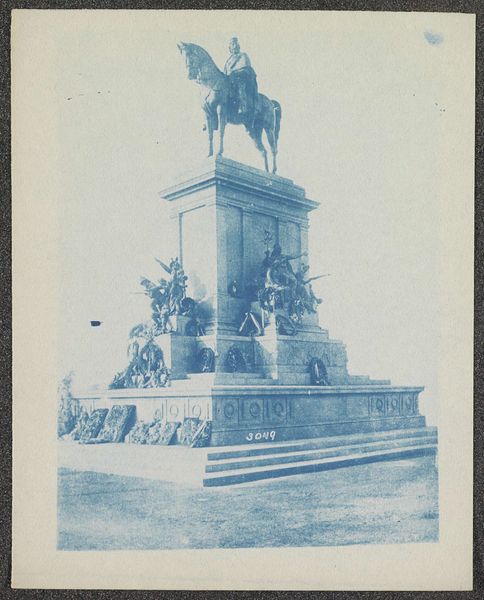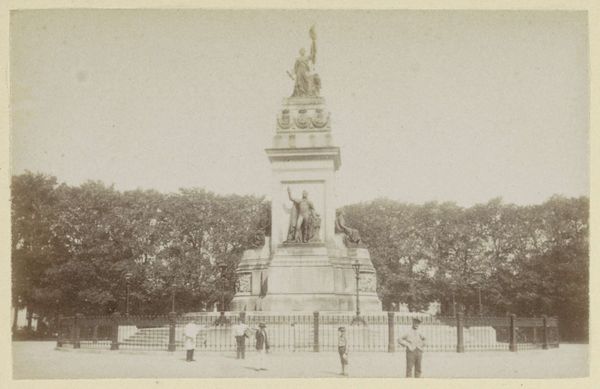![[Allegorical Sculpture of Industry, Pont du Carrousel] by Charles Marville](/_next/image?url=https%3A%2F%2Fd2w8kbdekdi1gv.cloudfront.net%2FeyJidWNrZXQiOiAiYXJ0ZXJhLWltYWdlcy1idWNrZXQiLCAia2V5IjogImFydHdvcmtzLzkzNjQyYjIyLTBjMDUtNGU1Zi05MTU2LTFiZTg4MjQ0OGU4MS85MzY0MmIyMi0wYzA1LTRlNWYtOTE1Ni0xYmU4ODI0NDhlODFfZnVsbC5qcGciLCAiZWRpdHMiOiB7InJlc2l6ZSI6IHsid2lkdGgiOiAxOTIwLCAiaGVpZ2h0IjogMTkyMCwgImZpdCI6ICJpbnNpZGUifX19&w=3840&q=75)
[Allegorical Sculpture of Industry, Pont du Carrousel] 1852
0:00
0:00
photography, sculpture
#
neoclacissism
#
landscape
#
photography
#
historical photography
#
sculpture
#
cityscape
#
history-painting
Dimensions: Image: 21.1 x 15.2 cm (8 5/16 x 6 in.) Mount: 42.7 x 27.8 cm (16 13/16 x 10 15/16 in.)
Copyright: Public Domain
Curator: Right, let's dive in. What we have here is Charles Marville’s photograph "[Allegorical Sculpture of Industry, Pont du Carrousel]" from 1852, currently residing at the Metropolitan Museum. The image depicts a neoclassical sculpture of a seated figure, wings adorning its head, overlooking a cityscape in Paris. What’s your first reaction to it? Editor: Austere. Very much a relic of an era obsessed with grand pronouncements, wouldn’t you say? There’s a distinct stillness to the photograph that I find compelling, almost melancholic. The city seems to fade into a hazy backdrop while the sculpture insists on its symbolic significance. Curator: I get that. There's a feeling of looking back. Neoclassicism often harked back to a glorified past. It’s interesting how photography, a relatively new medium then, captures something so deliberately ancient. This sculpture represents industry, right? Yet the image itself feels like an artifact unearthed. I feel like there’s a contradiction inherent there. Editor: Absolutely, a kind of tension emerges. The winged figure, clearly meant to evoke Hermes or Mercury – symbols of commerce and communication – is rendered static, fixed. The choice to portray “Industry” through a mythological figure is telling. What did the emerging industrial class need back then, myth to legitimate the present or to ennoble work. The details in Marville’s picture show a kind of classical propaganda about progress in 19th-century Paris. Curator: True, and that tension is made visible by photography! It also makes me wonder, does it glorify the power of this new era, or is it haunted by the transformation that it represents? Editor: Both, maybe? Or even more – the past becomes present. What seems modern ends up appearing antiquated, burdened with the echoes of previous belief systems. And, the photograph itself then functions as a symbolic bridge or maybe the space between then and now! It’s like Marville managed to freeze not just a sculpture but an entire cultural moment. Curator: Well said. The photograph allows for this simultaneous looking backward and forwards. Thanks for offering that. It gives a more complete appreciation of not only what’s shown but the vision and message in the overall piece.
Comments
No comments
Be the first to comment and join the conversation on the ultimate creative platform.
